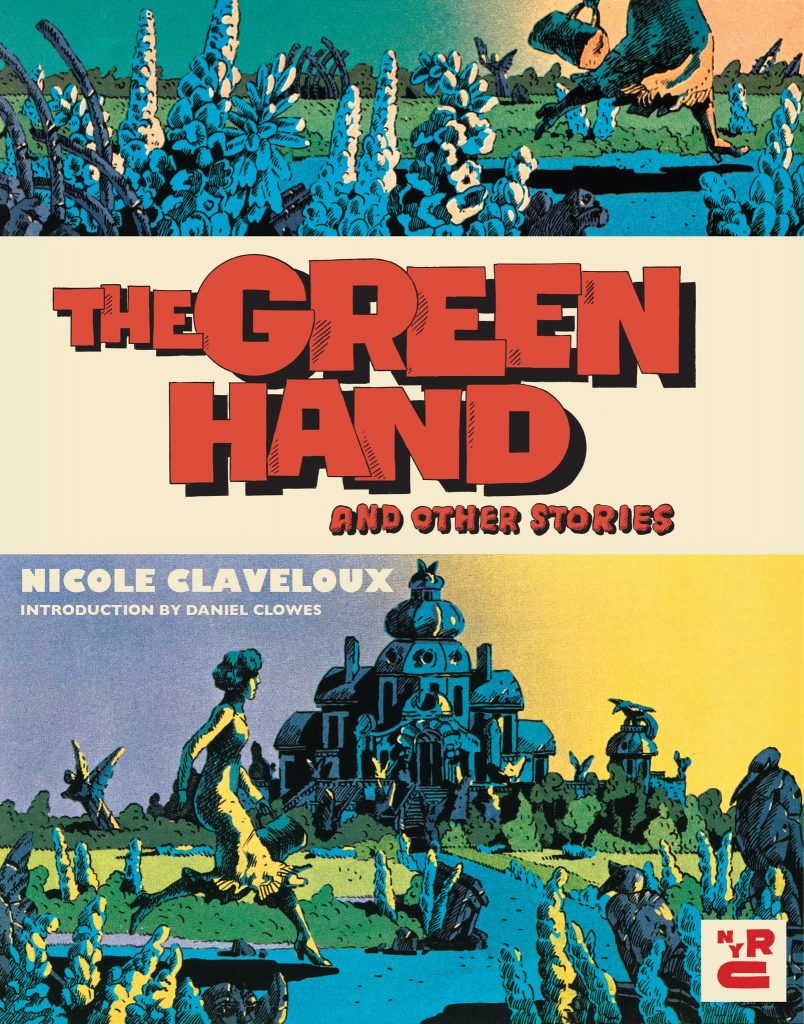
In his introduction to Nicole Claveloux’s The Green Hand and Other Stories, Daniel Clowes makes a seemingly paradoxical statement: though he’s admired Claveloux’s work for decades, he “had never actually read one of her stories.” There’s actually a completely reasonable explanation for this, involving the poor quality of previous English editions of her work, but the contradictions in Clowes’s statement makes a weird form of sense in light of the works to come. The stories in this book abound with surreal moments, impossible interactions, and unsettling imagery. It’s dreamlike in the best sense: as a reader, you might be greeted with a scene of childlike glee or treated to something dredged from a nightmare. Possibly both.
The first half of the book consists of The Green Hand, a story cycle that begins with its protagonist buys a plant for her apartment. (“Green hand” is the French version of the English expression “green thumb.”) While this is a seemingly mundane task, Claveloux establishes the surreal tone from the outset: the man handling the sale of the plant emerges from an array of greenery, and seems partially plant himself. That our heroine shares an apartment with an ill-tempered anthropomorphic bird–who instantly dislikes the newly-purchased plant–furthers the sense of the weird.
The stories in the second half of the book frequently follow one one concept to its logical, if absurd, end point. One follows a woman who waits her whole life for a prince to fall in love with her, only to be sorely disappointed by the results; another traces the unfortunate tale of a family whose members take turns murdering one another. In an interview in the back of this collection with Claveloux and her collaborator Edith Zha, Zha mentions that some of these are intended as a kind of self-satirization. (“I found reassurance in making fun of myself,” she says.)
The visuals here are stunning: there are traces of psychedelia in the swirls of color, unlikely juxtapositions, and malleability of the landscapes that dominate these works. But there are also sinister presences at work: the way that the organic can suddenly appear malformed or impossible, for one thing; as well as the presence of ominous figures in the background of certain scenes within The Green Hand. Though Claveloux is also well-versed in more familiar spaces: the final story in this book, “Underground Chatter,” details a strange ride on public transportation, but eschews color for a sleeker urban landscape.
Attempting to classify the stories contained in this collection is nearly impossible. They’re phantasmagorical yet surreal; they offer up moments of betrayal and transformation, and they’re rarely predictable—especially in the title story. In his introduction, Clowes alludes to another book of Claveloux’s that hasn’t been reprinted; having read this, I’m eager to explore more of her bibliography, even as it may slowly infiltrate my dreams.
***
The Green Hand and Other Stories
by Nicole Claveloux with Edith Zha; translated by Donald Nicholson-Smith
New York Review Comics; 108 p.
Follow Vol. 1 Brooklyn on Twitter, Facebook, and sign up for our mailing list.
